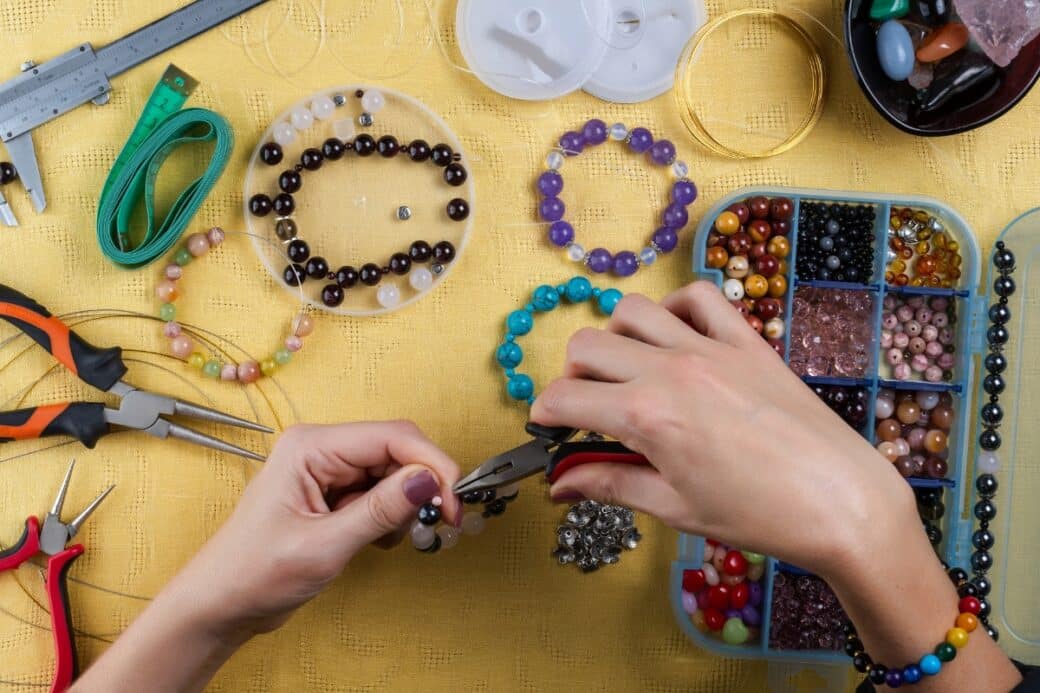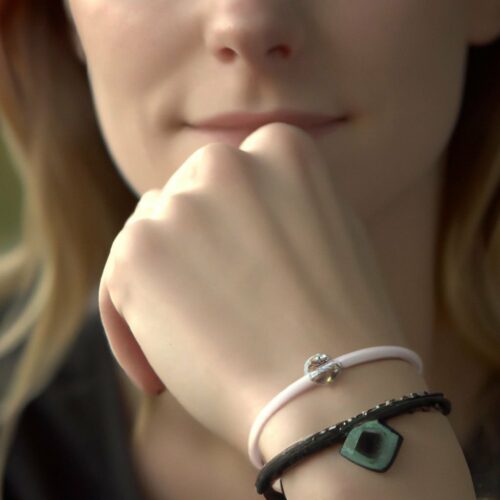Improve your mindfulness and harness inner peace with the captivating art of meditation bracelet crafting. Discover the perfect blend of creativity and tranquility as you embark on a journey to create your own masterpiece. With a wide range of materials and designs to choose from, you’ll be able to personalize your bracelet to reflect your unique style and intentions. As you string the beads and focus on each mindful breath, you’ll find yourself entering a state of calm and serenity. Brace yourself for a transformative experience as you master the art of meditation bracelet craft.

Meditation Bracelet Craft: Understanding the Significance of Meditation Bracelets
History of Meditation Bracelets
Meditation bracelets have a rich history that dates back centuries. They were first used as a form of prayer beads in various religious traditions, such as Buddhism and Hinduism. These early meditation bracelets were made of natural materials, such as wood and seeds, and were used as a tool to keep track of the number of mantras or prayers recited during meditation or prayer sessions.
Over time, the practice of using meditation bracelets spread to other cultures and became popular among not only religious practitioners but also individuals interested in the benefits of meditation for mental and emotional well-being. Today, meditation bracelets are crafted using a wide range of materials and designs, making them accessible to people of all backgrounds.
Why People Use Meditation Bracelets
Meditation bracelets serve several important purposes. Firstly, they act as a physical reminder to practice mindfulness and stay present throughout the day. When you wear a meditation bracelet, it serves as a gentle prompt to take a moment to pause, breathe, and refocus your attention on the present moment.
Additionally, meditation bracelets can help enhance the meditation experience by providing a point of focus. Many practitioners use the beads on the bracelet to count breaths, mantras, or affirmations during meditation. This repetitive motion can promote relaxation and concentration, making it easier to enter a meditative state.
Finally, meditation bracelets can be a source of comfort and emotional support. Some individuals find solace in wearing a meditation bracelet as a symbol of their commitment to self-care and mindfulness. It can serve as a personal talisman, reminding them to prioritize their well-being and mental health.
The Science Behind Meditation Bracelets
While the benefits of meditation bracelets are primarily experiential and vary from person to person, there is scientific evidence to support their effectiveness. Research has shown that repetitive movements, such as counting beads on a meditation bracelet, can have a calming effect on the mind and body. This process helps to regulate breathing, reduce stress levels, and promote overall relaxation.
Furthermore, the act of engaging with a physical object, such as a meditation bracelet, can provide a tangible anchor for those practicing meditation. By focusing on the beads or the touch of the bracelet, individuals can find it easier to stay present and let go of distracting thoughts.
In summary, meditation bracelets have a long-standing history and are valued for their ability to serve as reminders, aids, and symbols of mindfulness and relaxation.

Getting Started: Necessary Materials
Types of Beads Suited for Meditation Bracelets
When choosing beads for your meditation bracelet, it’s essential to consider both aesthetics and functionality. Popular bead materials for meditation bracelets include:
- Gemstone Beads: Gemstones, such as amethyst, quartz, and lapis lazuli, are frequently used due to their reputed healing properties. Each gemstone is associated with different energies and intentions, allowing for a personalized meditation experience.
- Wooden Beads: Natural wooden beads, such as sandalwood and rosewood, have a soothing aroma and represent grounding and stability. They are a popular choice for those seeking a closer connection with nature during their meditation practice.
- Seed Beads: Seed beads, often made from materials like rudraksha or lotus seeds, have cultural and spiritual significance. They are believed to hold positive energy and are commonly used in traditional meditation practices.
- Glass or Crystal Beads: Glass or crystal beads can add a touch of sparkle and visual appeal to meditation bracelets. They come in various colors and styles, allowing for a more customizable and personal design.
Selecting Your String Material
Choosing the right string material is crucial for creating a durable and reliable meditation bracelet. Some commonly used string materials include:
- Elastic Cord: Elastic cord is easy to work with, making it a popular choice for beginners. It provides flexibility and allows for easy on-and-off wear. However, over time, elastic cord may stretch and lose its elasticity, requiring restringing.
- Nylon Thread: Nylon thread is known for its strength and durability. It is an excellent choice for meditation bracelets that may be exposed to water or everyday wear and tear.
- Silk Thread: Silk thread is a more luxurious option known for its smooth texture and vibrant colors. It adds an elegant touch to meditation bracelets and is particularly suitable for gemstone beads.
- Waxed Cotton Cord: Waxed cotton cord has a natural appearance and provides a secure hold for your beads. It is a great choice if you prefer a more rustic or bohemian style.
Considerations for Clasps and Charms
While optional, clasps and charms can add personalization and beauty to your meditation bracelet. When choosing clasps and charms, consider the following factors:
- Functionality: Ensure that the clasp you choose is secure and easy to work with. A lobster clasp or a toggle clasp are popular choices as they are both secure and straightforward.
- Symbolism: Charms can be selected based on personal significance or intention. For example, a lotus flower charm represents enlightenment, while a hamsa charm symbolizes protection and positivity.
- Aesthetics: Choose clasps and charms that complement the overall design of your bracelet. Consider matching the metal color to the beads or selecting a charm that represents a specific theme or sentiment.
Tools Needed for Crafting
To create your own meditation bracelet, you will need a few essential tools:
- Bead Board or Tray: A bead board or tray provides a designated space for arranging and organizing your beads, making it easier to plan your bracelet’s design.
- Wire Cutters: Wire cutters are essential for cutting the string or thread to the desired length.
- Needles/Beading Needles: Beading needles, especially thin ones, can be useful for stringing beads with smaller holes.
- Scissors: Scissors are necessary for cutting the string or thread and trimming any excess material.
- Crimp Beads: Crimp beads are used to secure the ends of the string or thread and hold the bracelet together.
- Pliers: Pliers, such as chain-nose or flat-nose pliers, are helpful for manipulating and closing jump rings or attaching charms to your bracelet.
Now that you have gathered your materials and tools, it’s time to move on to designing your meditation bracelet.


